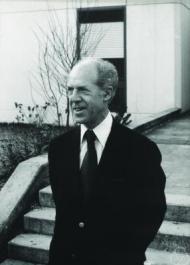The Higgs boson or Higgs particle is an elementary particle initially theorised in 1964, and tentatively confirmed to exist on 14 March 2013. The discovery has been called "monumental" because it appears to confirm the existence of the Higgs field, which is pivotal to the Standard Model and other theories within particle physics. In this discipline, it explains why some fundamental particles have mass when the symmetries controlling their interactions should require them to be massless, and—linked to this—why the weak force has a much shorter range than the electromagnetic force. Its existence and knowledge of its exact properties are expected to impact scientific knowledge across a range of fields, and should eventually allow physicists to determine whether the Standard Model or a competing theory is more likely to be correct, guide other theories and discoveries in particle physics, and—as with other fundamental discoveries of the past—potentially over time lead to developments in "new" physics, and new technologies.
This unanswered question in fundamental physics is of such importance that it led to a search of over 40 years for the Higgs boson and finally the construction of one of the most expensive and complex experimental facilities to date, the Large Hadron Collider, able to create and study Higgs bosons and related questions. On 4 July 2012, a previously unknown particle with a mass between 125 and 127 GeV/c2 was announced as being detected, which physicists suspected at the time to be the Higgs boson. By March 2013, the particle had been proven to behave, interact and decay in many of the expected ways predicted by the Standard Model, and was also tentatively confirmed to have + parity and zero spin, two fundamental criteria of a Higgs boson, making it also the first known scalar particle to be discovered in nature, although a number of other properties were not fully proven and some partial results do not yet precisely match those expected; in some cases data is also still awaited or being analyzed. As of March 2013 it is still uncertain whether its properties (when eventually known) will exactly match the predictions of the Standard Model, or whether additional Higgs bosons exist as predicted by some theories.
The Higgs boson is named after Peter Higgs, one of six physicists who, in 1964, proposed the mechanism that suggested the existence of such particle. Although Higgs' name has become ubiquitous in this theory, the resulting electroweak model (the final outcome) involved several researchers between about 1960 and 1972, who each independently developed different parts. In mainstream media the Higgs boson is often referred to as the "God particle," from a 1993 book on the topic; the sobriquet is strongly disliked by many physicists, who regard it as inappropriate sensationalism.
In the Standard Model, the Higgs particle is a boson with no spin, electric charge, nor color charge. It is also very unstable, decaying into other particles almost immediately. It is a quantum excitation of one of the four components of the Higgs field, constituting a scalar field, with two neutral and two electrically charged components, and forms a complex doublet of the weak isospin SU(2) symmetry. The field has a "Mexican hat" shaped potential with nonzero strength everywhere (including otherwise empty space) which in its vacuum state breaks the weak isospin symmetry of the electroweak interaction. When this happens, three components of the Higgs field are "absorbed" by the SU(2) and U(1) gauge bosons (the "Higgs mechanism") to become the longitudinal components of the now-massive W and Z bosons of the weak force. The remaining electrically neutral component separately couples to other particles known as fermions (via Yukawa couplings), causing these to acquire mass as well. Some versions of the theory predict more than one kind of Higgs fields and bosons. Alternative "Higgsless" models would have been considered if the Higgs boson were not discovered.
(photo source scienza.panorama.it)

